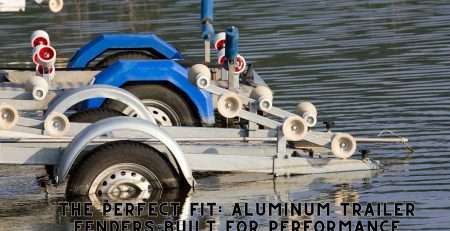
Choosing the Perfect Fit: Navigating Tandem Trailer Dimensions
Understanding Tandem Trailers
Tandem trailers are a popular choice for various hauling needs, offering increased stability and weight capacity compared to single-axle trailers. Understanding the basics of tandem trailers, including their dimensions, is essential for selecting the perfect fit for your specific requirements.
Introduction to Tandem Trailers
Tandem trailers, also known as tandem axle trailers, are trailers equipped with two axles placed close together. The dual-axle configuration provides improved stability, weight distribution, and load-bearing capacity. Tandem trailers are commonly used for hauling heavy equipment, livestock, and other large items due to their larger size and weight capacity.
Importance of Tandem Trailer Dimensions
Tandem trailer dimensions play a crucial role in determining the suitability of the trailer for specific applications and ensuring compliance with legal regulations. These dimensions include height, width, and length.
- Height Regulations for Tandem Trailers: The height of a tandem trailer is typically around 6 feet, but it can vary depending on the design and purpose of the trailer. It’s important to consider the height limitations imposed by transportation authorities to ensure safe and legal travel.
- Width Regulations for Tandem Trailers: The width of a tandem trailer is typically around 7 feet, but it can vary based on specific models and manufacturers. It’s essential to adhere to width regulations to prevent issues such as inadequate lane clearance and interference with other vehicles or structures.
- Length Regulations for Tandem Trailers: Tandem trailers typically have an overall length ranging from 10 feet to 40 feet, depending on their purpose and trailer type (Four Winds Trailers). The length of the trailer should comply with state-specific regulations to ensure safe and legal transportation.
These dimensions and weight limits are regulated by federal and state laws to ensure safety on the roads (CURT Manufacturing). It’s important to be aware of the regulations in your area and ensure that your tandem trailer adheres to these guidelines. Failure to comply with legal requirements can result in fines, penalties, and potential safety hazards.
By understanding the fundamentals of tandem trailers and the significance of their dimensions, you can make informed decisions when selecting a tandem trailer that meets your specific needs while complying with legal requirements.
Tandem Trailer Dimensions
When it comes to tandem trailers, understanding their dimensions is crucial to ensure compliance with legal regulations and choosing the right trailer for your needs. Tandem trailers are widely used for various purposes, such as hauling cargo, transporting vehicles, and more. In this section, we will explore the height, width, and length regulations for tandem trailers.
Height Regulations for Tandem Trailers
The legal height limit for a tandem trailer can vary by state in the US, ranging from 13’6″ to 14′ depending on the location. It’s important to note that these dimensions and weight limits are regulated by federal and state laws to ensure safety on the roads. To comply with the height regulations, it’s essential to consider the overall height of the trailer, including any cargo or equipment loaded on it.
Width Regulations for Tandem Trailers
A tandem trailer is typically allowed to have a maximum width of 8’6″ in most states across the US. This width limitation ensures that the trailer can safely navigate roads and highways without impeding other vehicles. It’s important to note that the width limit includes the trailer itself, including any fenders or attachments. Exceeding the width regulations can result in fines and potential safety hazards.
Length Regulations for Tandem Trailers
Similar to height and width, the maximum length limit for a tandem trailer can vary by state. Most states impose a limit of 48′ to 53′ in length (Source). It’s crucial to adhere to these length regulations to maintain safe road conditions and prevent accidents. Exceeding the length limit can result in legal consequences and make manoeuvring the trailer more challenging.
By understanding the height, width, and length regulations for tandem trailers, you can ensure compliance with legal requirements and avoid unnecessary complications. It’s important to consult the specific regulations in your state or region to ensure accurate information for your location. Additionally, when considering purchasing or using a tandem trailer, always prioritise safety and choose a trailer that meets your needs while adhering to the specified dimensions.
Legal Considerations for Tandem Trailers
When it comes to tandem trailers, it’s crucial to understand the legal considerations and regulations surrounding their dimensions. These regulations are in place to ensure safety on the roads and prevent accidents. In this section, we will explore state-specific tandem trailer regulations, compliance with the Federal Bridge Formula, and understanding axle weight limits.
State-Specific Tandem Trailer Regulations
Tandem trailer regulations can vary from state to state in the US. It’s important to be aware of the specific regulations in your state to ensure compliance. Some key dimensions that may be regulated include height, width, and length.
- Height Regulations: The legal height limit for a tandem trailer varies by state, typically ranging from 13’6″ to 14′. It’s crucial to adhere to the height restrictions to avoid clearance issues and potential damage to overhead structures.
- Width Regulations: In most states, a tandem trailer is allowed to have a maximum width of 8’6″ (source). Exceeding this width limit may require special permits or escorts, depending on the state regulations.
- Length Regulations: The maximum length limit for a tandem trailer also varies by state, typically ranging from 48′ to 53′ (Source). Some states may have additional restrictions on the length, such as limitations on the combination of the trailer and the tractor. It’s important to be aware of these regulations to avoid legal complications.
Compliance with Federal Bridge Formula
Tandem trailer dimensions are regulated by the Federal Bridge Formula, which takes into account the type of vehicle, the number and spacing of axles, and the total gross weight. This formula ensures that the weight is evenly distributed across the axles to prevent damage to bridges and roadways.
To comply with the Federal Bridge Formula, it’s essential to properly distribute the weight along the truck’s wheelbase and trailer axle tandems. This ensures that the weight is evenly balanced across the axles. Failure to comply with these regulations can result in fines and penalties.
Understanding Axle Weight Limits
Tandem axle weight limits also vary, depending on state regulations. These limits typically range from 34,000 pounds to 40,000 pounds. It’s important to note that some states may have higher weight limits if the truck is equipped with advanced safety features, such as electronic stability control or automatic emergency braking systems. Understanding and adhering to these weight limits is crucial to ensuring compliance and preventing safety hazards.
In conclusion, legal considerations for tandem trailers encompass state-specific regulations, compliance with the Federal Bridge Formula, and understanding axle weight limits. It is essential for trucking companies and drivers to be aware of these regulations to ensure compliance, avoid fines, and maintain safety on the roads.
Common Sizes and Weight Capacities of Tandem Trailers
When considering tandem trailers, it’s important to understand the common sizes and weight capacities available. Tandem trailers come in a variety of dimensions to accommodate different hauling needs. Let’s explore the length options, width options, payload and weight capacity of tandem trailers.
Length Options for Tandem Trailers
Tandem trailers are available in various lengths, ranging from smaller utility trailers to larger enclosed trailers. The specific length options can vary depending on the manufacturer and model. Here are some common length options for tandem trailers:
| Trailer Length | Description |
|---|---|
| 16 feet | Ideal for hauling small to medium-sized loads |
| 18 feet | Suitable for hauling larger items or multiple smaller items |
| 20 feet | Offers additional space for hauling longer or bulkier items |
| 24 feet | Provides ample space for heavy-duty hauling or larger cargo |
Figures courtesy TP Trailers and Four Winds Trailers
Width Options for Tandem Trailers
The width of a tandem trailer is an important dimension to consider, as it determines the amount of space available for cargo. While the width can vary based on specific models and manufacturers, here are some common width options for tandem trailers:
| Trailer Width | Description |
|---|---|
| 6 feet | Suitable for smaller loads or narrower cargo |
| 6.5 feet | Provides a balanced width for a variety of hauling needs |
| 7 feet | Offers additional space for wider cargo or equipment |
| 8.5 feet | Provides ample width for larger loads and equipment |
Figures courtesy TP Trailers and Four Winds Trailers
Payload and Weight Capacity of Tandem Trailers
The payload capacity and weight capacity of tandem trailers determine the maximum load they can carry. These capacities can vary depending on the size, design, and construction of the trailer. Here are some examples of payload and weight capacities for tandem trailers:
| Trailer Type | Payload Capacity | Weight Capacity |
|---|---|---|
| Utility Trailer | 2,000–5,000 pounds | 7,000–10,000 pounds |
| Enclosed Trailer | 5,000–10,000 pounds | 10,000–14,000 pounds |
| Flatbed Trailer | 10,000–30,000 pounds | 14,000–20,000 pounds |
Figures courtesy Four Winds Trailers
It’s important to note that these figures are estimates and can vary depending on the specific make and model of the tandem trailer. It’s always recommended to check with the manufacturer or consult the trailer’s specifications for accurate and up-to-date information on payload and weight capacity.
Understanding the common sizes and weight capacities of tandem trailers allows you to choose the right trailer for your hauling needs. Whether you require a shorter or longer trailer, a narrower or wider one, or a specific payload and weight capacity, there are tandem trailers available to suit a variety of requirements. Consider your specific hauling needs and consult with a reputable dealer to find the tandem trailer that best fits your requirements.
Manoeuvrability and Practicality of Tandem Trailers
When it comes to tandem trailers, manoeuvrability and practicality are important factors to consider. The size and dimensions of a tandem trailer can greatly impact its manoeuvrability in various settings. Let’s explore the factors affecting manoeuvrability, choosing the right tandem trailer size, and considerations for slide-out rooms and extensions.
Factors Affecting the Manoeuvrability of Tandem Trailers
The length of a tandem trailer plays a significant role in its manoeuvrability. Longer tandem trailers may provide more living space and storage capacity, but they can be more difficult to manoeuvre in tight spaces. It’s important to consider the overall length of the tandem trailer, including the tow vehicle, when determining its manoeuvrability and the ability to navigate through narrow roads or make sharp turns.
In addition to length, the width of a tandem trailer can also impact its manoeuvrability. Tandem trailers with slide-out rooms or extensions can extend the overall width of the trailer when extended. This should be taken into consideration when planning to navigate through narrow spaces or campsites with limited width availability.
Choosing the Right Tandem Trailer Size
Selecting the appropriate size of a tandem trailer is crucial to ensuring manoeuvrability and practicality based on the intended use and the available space for parking and storage (source). Shorter tandem trailers are generally easier to manoeuvre and navigate in tight spaces, making them more suitable for camping in smaller campsites or crowded areas. On the other hand, longer tandem trailers offer more living space and storage, which can be advantageous for longer trips or extended stays.
Consider your specific needs, preferences, and the environments you plan to navigate when choosing the right tandem trailer size. Assess the available space for parking and storage, as well as any potential limitations in terms of length and width.
Considerations for Slide-Out Rooms and Extensions
Tandem trailers with slide-out rooms provide additional living space when parked, but it’s important to note that they can affect manoeuvrability. When extended, slide-out rooms can increase the overall width of the trailer, potentially limiting access to narrow spaces or campsites with width restrictions. Before purchasing a tandem trailer with slide-out rooms or extensions, ensure that the width restrictions of your intended destinations can accommodate the extended width of the trailer.
Considering these factors will help you make an informed decision when choosing a tandem trailer that strikes the right balance between manoeuvrability and practicality. Remember to assess your specific needs, available space, and the environments you plan to navigate to ensure a smooth and hassle-free towing experience.
Author
I am Rahatul Ashiq Tamal. Another author of Muscle Trailers. Muscle Trailers is a well-known trailer brand in Sydney, Melbourne & Adelaide

Upgrade Your Hauling Game: Explore the Best Tipper Trailers for Sale
Boost your hauling with the best tipper trailers for sale. Discover top choices, buying tips, and maintenance advice.

The Ultimate Guide to Utility Trailer Fenders: Boosting Performance
Master utility trailer fenders! Discover top picks, installation tips, and legalities for peak performance.

The Perfect Fit: Aluminum Trailer Fenders Built for Performance
Maximize performance with aluminum trailer fenders. Learn benefits, maintenance, and installation tips.
